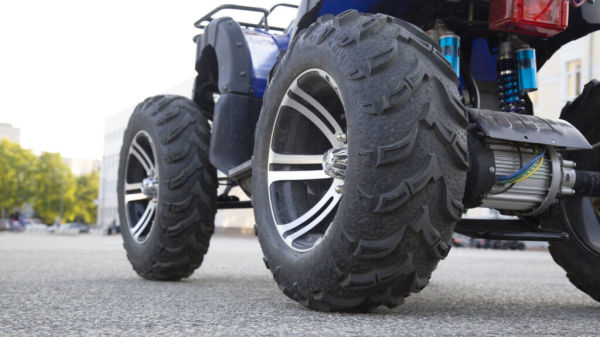Laws regarding ATVs (all-terrain vehicles) and UTVs (utility terrain vehicles, also known as side-by-sides) aren’t consistent from city to city, or county to county, let alone state to state. Some require a horn to be considered street legal, while others don’t even require headlights or taillights to be used on public roads. Ownership requirements aren’t regulated either. Some states want a title, plate, an OHV (off-highway vehicle) decal, as well as completion of a safety education course. Others don’t need the safety course, but do some of the other things.
Florida law, which categorizes both ATVs and UTVs as off-highway vehicles (OHVs). According to Florida Legislature statute 317.0003, an ATV is specifically defined as “any motorized off-highway or all-terrain vehicle 55 inches or less in width which has a dry weight of 1,500 pounds or less, is designed to travel on three or more nonhighway tires, and is manufactured for recreational use by one or more persons.” ATVs aren’t street legal in Florida, per se, because they can’t be driven on most public roads or streets.
However, they can be driven on unpaved roads where the posted speed limit is less than 35 miles per hour — but only during daylight hours. One thing to keep in mind is that individual counties may choose to be exempt from this allowance entirely, so you should check with your local DMV just to be sure. What’s more, every ATV must have a legal title in the state of Florida.
ATVs, UTVs and ROVs … oh my!
Additional laws state that four-wheeled ATVS can be used by law enforcement officers on public roads within public lands while performing their duties. They can also be driven by police on public roads within five miles of a beach access point, but only when traveling to and from the beach. Civilians caught riding them on public roads or streets not designated for such use can receive a noncriminal traffic infraction, punishable as a nonmoving violation.
Interestingly, within statute 317, there isn’t a single reference to or definition of UTVs. There is for ROVs, though, which stands for “recreational off-road vehicle” and is anything with a width of 80 inches or less and a dry weight of less than 3,500 pounds that’s (via Florida Legislature) “designed to travel on four or more nonhighway tires, and is manufactured for recreational use by one or more persons.” Golf carts (which shouldn’t be used to tow anything) don’t fall under this category as they’re defined differently.
Golf carts, ATVs, and other “utility” type rigs are pivotal to the state’s economy. The vast stretches of coastline, combined with the numerous golf courses, resorts, and HOAs dotting Florida’s landscape, can’t be accessed, maintained, or secured using any other type of vehicle. In fact, the Florida Senate already defined a “utility vehicle” as a vehicle used for “general maintenance, security, and landscaping purposes,” but that doesn’t apply to anything used primarily to transport people (or property) on a street or highway, including golf carts or all-terrain vehicles. The technical difference between these types does matter because it can determine liability in an accident.








